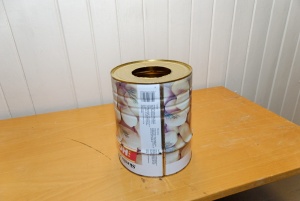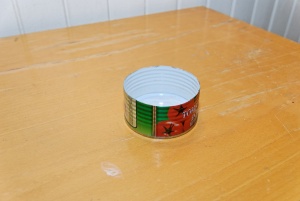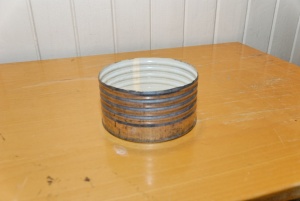Oil Stove
An efficient oil stove will burn some type of organic oil in an idea environment where the temperature and air (oxygen) supply is optimal. The goal is to burn the fuel in a complete combustion.
Oil as fuel
Oil can be used as fuel for stoves, engines, lamps, and other applications. But the problem with oil is the high flash point, the phase from solid to gaseous form (vaporization). Compared to gasoline, with a flash point of -38 °C, organic oils will has a considerable higher flash point, between 230-360 °C.
Biodiesel can be made of organic oil, methanol, and a catalyst. The catalyst will help to make the reactions happen on a lower flash point and increase the combustion rate. Pure vegetable oil when vaporized will clog the pipes after awhile because of impurities and will damage the engine. Methanol, type of alcohol, will dissolve the oil and make it fluid and easier to ignite.
A combustion reaction is splitting of one molecule into a set of other molecules. By applying oxygen and energy the bonds holding the molecule together can be broken down and transformed by oxidation into other molecules Chemical reaction.
An important law in chemistry is La Chatelier's principle:
If the equilibrium of a system is disturbed by a change in one or more of the determining factors (as temperature, pressure, or concentration) the system tends to adjust itself to a new equilibrium by counteracting as far as possible the effect of the change. [1]
Principles
Two main principles will be used to design the stove:
- Rising heat to create a turbulence
- Heat to help the fuel to reach flash point
The heat released by the fire will create turbulence that can be used to control the flame through a conduit. By adjusting the inlet points the intensity of the flame can also be controlled. This can then be used to keep the temperature at a sufficient level while conserving fuel.
For a combustion be complete the supply of air has to be optimal and the temperature surrounding the combustion should be on level with the flash point. Using both metal rods and ceramic bricks as heat storage, the temperature should stabilize inside the stove and help the combustion. The flash point of a flammable liquid is the lowest temperature at which there can be enough flammable vapor to ignite, when an ignition source is applied [2]. Rapeseed oil, a.k.a Canola oil, has a flash point of 327 °C [3].
For optimal efficiency and heat transfer, the kettle will be placed right on top of the exhaust conduit.
Building stove
The burner and conduit will be two separate pieces. This makes it easy to ignite and refill the burner.
Equipment
- 1x Large can
- 1x Medium can
- 2x Small can
- 2x Small can cutout top sheets
- 1x Threaded rod
Build
Cut a hole on the bottom of the large can to fit the small can.
Remove the bottom of one of the small cans.
And insert it into the hole on the large can.
Split the other small can in two pieces, right in the middle.
Do the same on the medium can, but 3/4 down.
Drill 4 holes on top of the medium can to fit the small can inside the square. Screw 4 bolts into the holes.
File:Oil stove medium can screws.jpg
Drill 8 holes in two of the top sheets and cut the thread rod in right lengths so that it reaches the top of the conduit.
File:Oil stove small can sheet threaded rods.jpg



